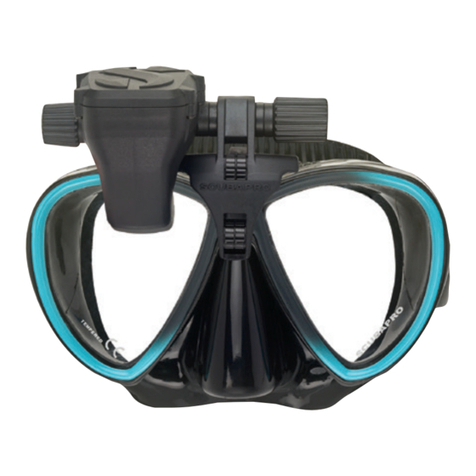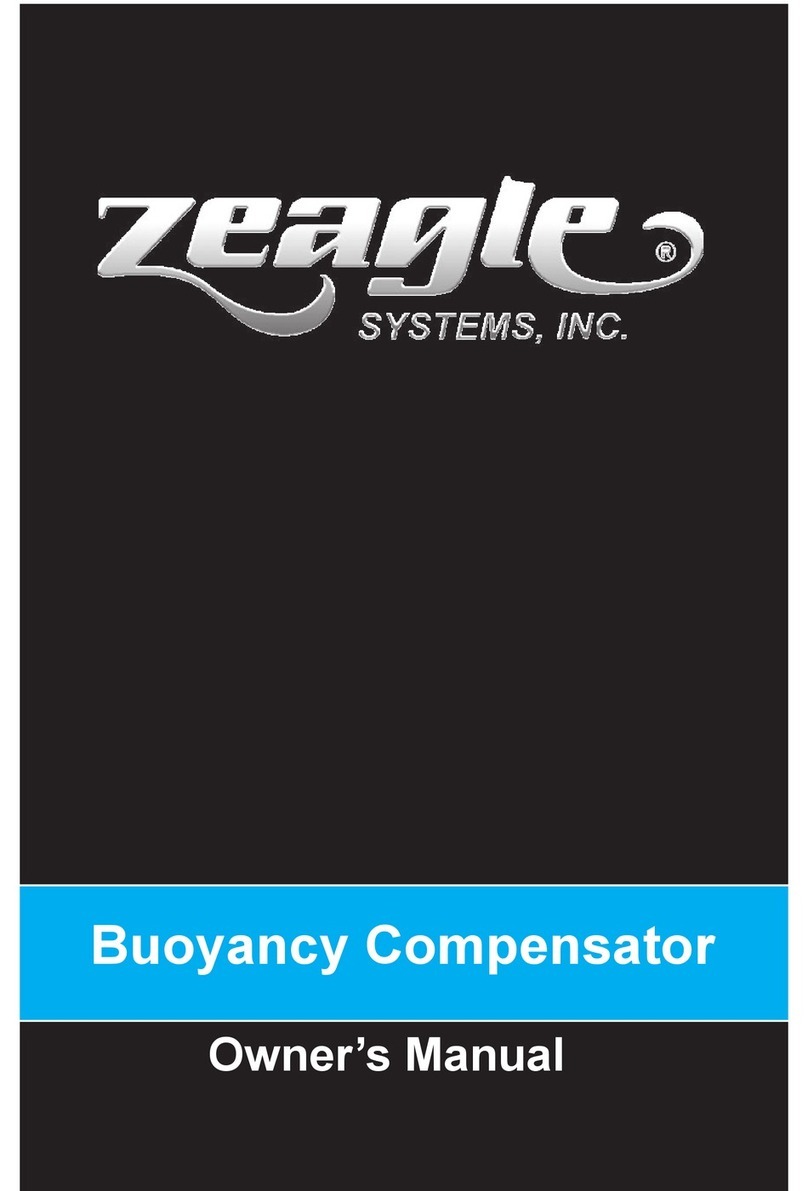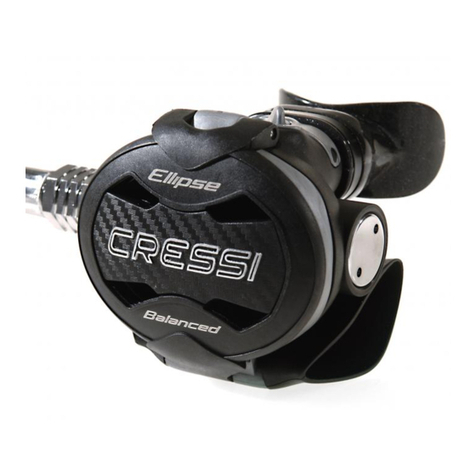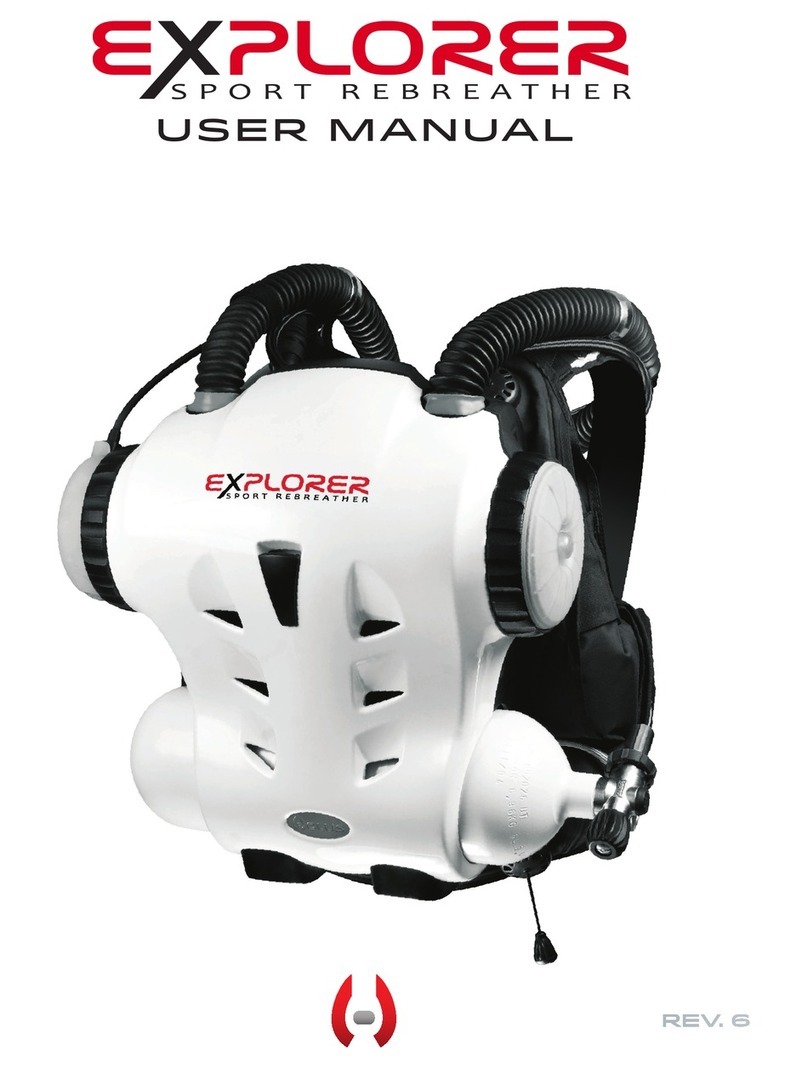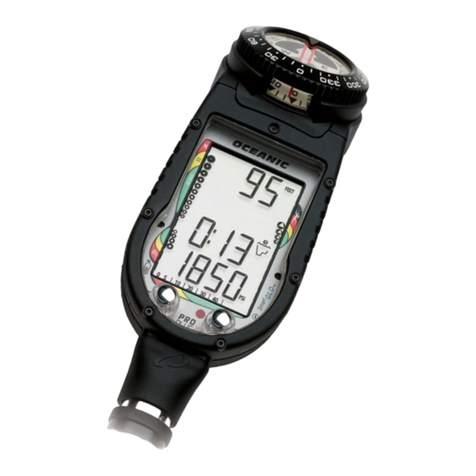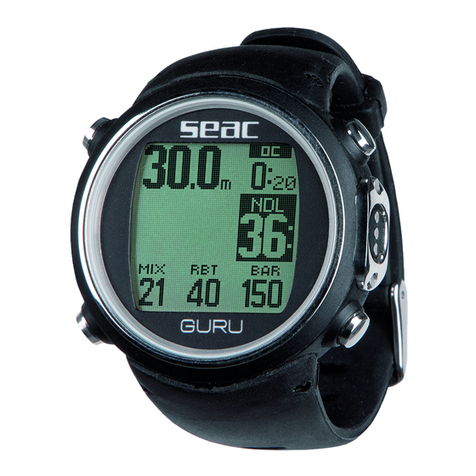Hartenberger compact User manual

Instructions for use
Hartenberger
Underwater Hand Lamp
compact
professional

Hartenberger Underwater Hand Lamp compact / professional Instructions for use
2
CONTENTS SAFETY WARNING.2
GUARANTEE.2
APPLICATIONS.2
ARTICLE DESCRIPTION.3
TECHNICAL SPECIFICATIONS.5
FRONT HOUSING RING 5
POWER PACK 6
PREPARATION FOR USE.6
USING THE UNDERWATER LAMP.7
AFTER USE.8
TRANSPORT 8
STORAGE.9
CHARGING.9
CARE AND MAINTENANCE.12
SERVICE.13
FAULT DIAGNOSIS.13
ACCESSORIES.15
SPARE PARTS 14
SAFETY WARNING •Before attempting to use the underwater lamp, carefully
read and adhere to these instructions for use.
•Before the first time the lamp is used, the lamp must be
charged.
•Do not operate the lamp immediately after charging.
•Always point the beam of the lamp away from yourself.
•Never point the lamp beam in the direction of another
person.
GUARANTEE When these instructions for use and the care and
maintenance guidelines are adhered to, we will guarantee all
mechanical parts made from steel, aluminium, glass and
plastic for a period of 5 years against manufacturers defects
and material failure. All electronic parts are guaranteed for a
period of 1 year. The rechargeable cells and the charger
have a guarantee against manufacturers defects and
material failure for 6 months. The Halogen bulbs and O-Ring
seals are expendable items and are therefore not covered by
the guarantee.
APPLICATIONS The Hartenberger Underwater Lamps are for use in
underwater lighting applications. Use of the lamp in an
environment other than fully submerged in water may cause
the rechargeable cells to overheat which may result in the
expected life of the cells being shortened.

Hartenberger Underwater Hand Lamp compact / professional Instructions for use
3
ARTICLE DESCRIPTION HOUSING
1. Front Ring
2. Front O-Ring seal
3. Housing
4. Rear O-Ring seal
5. Rear Ring
6. Magnetic Switch
7. Transport Safety Pin
1 2 3 4 5 6 7 Diagram 1
FRONT RING The front sealing ring must be removed to access the
rechargeable cell pack for charging and/or to replace the
halogen bulb.
HOUSING/FRONT AND REAR SEALS
The housing is made from aluminium and is sealed with
threaded rings at the front and the rear, which are sealed
with blue Viton O-Rings (dimensions 78 x 2.5. 50° Shore
hardness).
REAR RING The rear sealing ring is screwed onto the housing during the
assembly by the manufacturer using a special tool. It cannot
and should not be removed or replaced by hand.
MAGNETIC SWITCH
The magnetic switch controls all the electronic functions that
each lamp has to offer.
Compact version OFF-100%-100%-100%-100%-OFF
Professional version OFF-25%-50%-75%-100%-OFF
Each version also has a distress signal function according to
the Morse alphabet; SOS (3 x dot, 3 x dash, 3 x dot).
TRANSPORT SAFETY PIN
The transport safety pin can only be fitted into position when
the lamp is turned off. With the safety pin inserted, the switch
is prevented from rotating and the lamp cannot be turned on
accidentally.

Hartenberger Underwater Hand Lamp compact / professional Instructions for use
4
POWER PACK
1. Reflector
2. Halogen Bulb
3. Spare O-Ring
4. Spare Halogen Bulb Holder
5. Plug-In Electronic Control
Panel
6. Charging socket
1 2 3 4 5 6 Diagram 2
REFLECTOR The reflector is pressed on to the power pack and can be
removed by simply pulling the reflector away from the power
pack. To alter the beam of the lamp there are two reflectors
available: (See accessories page 15).
Spot for standard lighting applications
Flood for Photo and Film use
HALOGEN BULBThe halogen bulb is pushed into a standard socket and can
easily be replaced.
SPARE O-RINGThe spare O-Ring for the housing sealing rings is stowed
under the reflector. After removal of the reflector from the
power pack, the spare O-Ring can be removed and used to
replace the O-Ring sealing the front sealing ring.
SPARE HALOGEN BULB
One of the five support pillars separating the caps around the
cells has a grey coloured holder for the spare halogen bulb.
The grey cover can be rotated around the axis of the support
pillar to expose the stowage of a spare bulb.
PLUG-IN ELECTRONIC CONTROL PANEL
Die electronic is available in two versions:
1. compact fixed power setting
2. professional variable power settings (also as an option
for the compact lamps)
CHARGING SOCKET
The plug from the charger is plugged into the charging
socket for charging purposes.

Hartenberger Underwater Hand Lamp compact / professional Instructions for use
5
TECHNICAL SPECIFICATIONS
DURATION OF USE
The burn time of a lamp with Nickel Cadmium Cells is
dependant upon water temperature, state of cell charge and
the type of bulb. The water temperature greatly affects the
burn time. For example, in water temperatures of between 4
and 6 °C, (40 -45 °F) the burn time will be at best 90% of the
stated capacity.
New Ni-Cad Cells only reach their full capacity after 2-3
charging cycles.
Type Voltage/Capacity 35 watt 50 watt 100 watt
125 12v/5Ah 120 Min 70 Min 35 Min
128 12v/8Ah 180 Min 100 Min 50 Min
Die Heavily printed figures represent the burn times with the
standard bulbs as delivered.
DIMENSIONS AND WEIGHT
Type approx. Length & Diameter approx. Weight on land approx. Weight in water
125 205x100 2.9 kg 1.0 kg
(8 in x 4 in) (6 lbs 6 oz) (2 lbs 3 oz)
128 270x100 3.9 kg 1.5 kg
(11 in x 4 in) (8 lbs 9 oz) (3 lbs 4 oz)
RESISTANCE TO WATER PRESSURE
We guarantee that all Hartenberger lamps are pressure proof
to a depth well in excess of 200 meters (650 feet).
FRONT GLASS PLATE
The professional lamps have a special borosilicate glass
plate as standard. These glass plates have a temperature
shock resistance of 300°C, (570°F). The compact version
can be fitted with these glass plates upon request.
FRONT HOUSING RING
UNSCREWING THE FRONT HOUSING RING.
The front housing ring is removed by unscrewing the ring
anti-clockwise, (thread length approx. 10 mm [3/8“]). Whilst
unscrewing the front ring, the housing should be held in an
upright position with the front ring facing up, thus preventing
the power pack from inadvertently falling out of the housing.
REFITTING THE FRONT HOUSING RING
Before refitting the front ring on the housing, all threads,
sealing surfaces and seals must be checked for integrity and
cleanliness.
If the O-Ring is removed, care must be taken not to damage
the groove in which the O-Ring sits. A soft blunt tool should

Hartenberger Underwater Hand Lamp compact / professional Instructions for use
6
be used for the removal of the O-Ring, i.e. a wooden tooth
pick.
Should the sealing surfaces and/or components be
contaminated, then the O-Ring and its groove should be
thoroughly cleaned and lubricated with a light coating of
silicone grease. Should the sealing surfaces and/or
components be damaged, then all damaged parts should be
replaced. It is recommended that after such work has been
carried out, that the seal/integrity of the housing is first
checked underwater without the power pack fitted.
The front ring is screwed on clockwise and should be
tightened only by hand. After the sealing surfaces have made
contact, the ring will need to be tightened by hand
approximately a further ¼ turn. The thread should be able to
be opened again without undue force.
POWER PACK
REMOVAL OF THE POWER PACK
After removing the front sealing ring from the upright
housing, the housing can then be tilted over and the power
pack will slide out of the housing.
REFITTING THE POWER PACK
Hold the housing in a position where the opening is pointing
slightly upwards, the power pack can now be slowly lowered
into the housing. The locating pin should locate in the orifice
in the rear of the power pack housing ensuring the correct
position of the power pack.
PREPARATION FOR USE
BEFORE THE LAMP IS USED FOR THE FIRST TIME
Before the first use, the cells must be charged. ( See
Charging
page 8)
Hartenberger underwater lamps are manufactured to a high
degree of precision and each lamp is tested to a water
pressure of 10 bars. The condition of the lamp and in
particular the housing and sealing rings should however be
checked before the first use.
We recommend that the first under water use be conducted
without the power pack to check the seal of the housing.
BEFORE EACH USE.
The rechargeable cells will slowly discharge naturally when
not in use, (depending on the ambient temperature up to
60% discharge in one month!). We recommend therefore
that the cells are charged one day before each use.
Before each use, the front threads, sealing surfaces and O-
Ring must be checked for integrity and cleanliness. (See
Page 5).

Hartenberger Underwater Hand Lamp compact / professional Instructions for use
7
If the bulb has been removed for transport, it should be
refitted into the socket.
•The transport safety pin should be removed from the
magnetic switch immediately before the lamp is used.
USING THE UNDERWATER LAMP
MAGNETIC SWITCH
The plug-in electronic is activated by turning the magnetic
switch. The magnetic switch can be rotated into one of 5
positions. The orifice of the transport safety pin indicates the
present setting of the switch as indicated on the decal
located around the switch:
Below are the settings of the switch from 0 rotating to the
right:
COMPACT VERSION OFF -100% -100% -100% -100% -OFF
PROFESSIONAL VERSION OFF -25% -50% -75% -100% -
OFF. The use of the lamp with reduced power settings saves
power and will extend the burn time. The amount of light is
represented approximately by the settings on the scale of the
decal.
If the lamp is used constantly at a reduced setting (25% or
50%), the bulb may develop a grey shadow on the glass of
the bulb. If a reduced power setting is constantly required, it
is recommended that a bulb be fitted with less wattage.
SOS DISTRESS SIGNAL
The electronic control allows the lamp to generate an SOS
distress signal in the form of Morse alphabet flashes. To
activate the SOS distress signal, rotate the switch from the
OFF position towards the right to the first setting, (25% and
then immediately afterwards (within 1 second), back through
the OFF position and on to the 100% setting. The distress
signal mode can be exited by rotating the magnet switch to
any other position.
The SOS distress signal will have a duration of
approximately 3 times the duration of the lamp if it were to be
operated at 100%. When the cells are virtually discharged,
the flashes will reduce in intensity.
•This feature should only be used in an emergency.
Should you require the SOS distress signal in an
emergency, we recommend that the signal is turned off
when the intensity of the flashing reduces, and to turn
the SOS signal back on should help be sighted.
LOW LEVEL CAPACITY WARNING
When the lamp blinks 3 times, the user is warned of the
immanent end of the burn time of the lamp. When the lamp
is being used at 100% power, this will be approximately 3 -5
minutes after the 3 blinks.

Hartenberger Underwater Hand Lamp compact / professional Instructions for use
8
DISCHARGE PROTECTION
After the lamp warns of the immanent loss of power, (the
lamp will blink continuously off and on), the lamp should be
turned off as soon as possible. The dive should be
terminated as soon as possible to avoid total loss of
illumination. The blinking will last approximately 3 minutes
when the lamp is set at 100%. If the professional version is
being used, we recommend that the lamp be switched over
to the 25% power setting as soon as possible. (Switch to the
OFF position and then on to 25%). The lamp will burn for
approximately 3 minutes longer, and then the blinking will
resume. Should the lamp turn itself off, then turn the switch
to the OFF position and do not use the lamp until it has been
charged.
AFTER USE Check the lamp immediately after the dive for evidence of a
possible flooding of the housing. Should the housing have
flooded then refer to the problem diagnosis on page 13. The
cells should be charged as soon as possible after use.
TRANSPORT MAGNETIC SWITCH
Before transporting the lamp, the magnetic switch must be
secured in the OFF position. This is done simply by inserting
the transport safety pin into the switch whilst it is in the OFF
position. When the pin is removed, the switch can be rotated.
As an additional precaution, we recommend that the halogen
bulb is removed from the socket.
The Transport safety pin in held in the switch by an O-Ring.
Should the O-Ring may affect the correct function of the pin,
it should be replaced.
•The screw securing the magnetic switch is glued into
position and no attempt should be made to remove it.
REMOVAL/REFITTING THE BULB
To replace the halogen bulb, first unscrew the front sealing
ring and remove the power pack. Do not touch the glass of
the halogen bulb with your fingers. This may result in the
contamination of the bulb with residue from the fingers and
will result in a reduction of the performance of the bulb. Use
a clean dry lint free cloth to grasp the bulb and pull it out of
its socket. The replacement bulb can be pushed into the
socket until a resistance is felt. The bulb should be sitting
centrally in its socket to ensure that an even beam of light is
produced. After bulb replacement the lamp can be
assembled, check the correct function of the lamp after
assembling the lamp.

Hartenberger Underwater Hand Lamp compact / professional Instructions for use
9
STORAGE The lamp should be stored in a fully charged condition with
the housing closed securely. An ideal storage temperature is
between 15 and 25°C, (60 and 75°F). Under no
circumstances should the lamp be subjected to temperatures
above 45°C, (110°F).
The rechargeable cells will slowly discharge when not in use,
(depending on the ambient temperature up to 60% discharge
in one month!). We recommend therefore that the cells be
charged approximately once a month when the lamp is not in
use.
For extended periods of storage, the power pack should be
removed from the housing and stored separately in a suitable
cool dry place, (see preparation for charging page 10).
Regularly check the cells for signs of corrosion or gas
leakage, (the protective skin showing signs of bubbling,
floury or white residue between the cells or in the housing,
corrosion around the charging socket.) Should you discover
signs of leakage or corrosion, return the lamp immediately to
the manufacturer.
CHARGING INTRODUCTION IN THE CHARGING OF NICKEL CADMIUM CELLS
Nickel Cadmium cells are generally described as being gas
and acid sealed cells. The position of the cells during the
charging process is therefore irrelevant as no electrolyte can
escape. There is however no supplier of cells that will
guarantee this feature for the entire life of the cells! During
the charging or discharging process, the cells may produce
an over pressure inside, opening the integrated over pressure
relief valve. Should this occur, the electrolyte, or Hydrogen
can escape from the cells. Because the electrolyte is a very
aggressive acid, and additionally conducts electricity, this
may lead to the galvanic corrosion of the cells, and a
destruction as a result of the contact with the acid. The
escaping hydrogen can combine with oxygen in the air and
form a highly explosive gas. A single cell the size of a
standard D cell battery can produce up to 25 litres, (1 cu ft)
of gas! It is for this reason that nickel cadmium cells should
always be removed from a housing before they are
recharged. Only then is the safe use and longest possible life
of the cells guaranteed.
MEMORY EFFECT
The so called Memory Effect is the common term for the
reduction in the capacity of the cells as a result of charging
the cells in a partially discharged condition. (e.g. A wireless
telephone hand set has a battery life of 24 hours, but is
replaced on the station and therefore charged after 3 hours).
The common technique for overcoming this is to fully

Hartenberger Underwater Hand Lamp compact / professional Instructions for use
10
discharge the cells before charging.
We regard this as being more harmful for underwater lamps
with between 5 and 20 cells. The constant discharge down to
the cut-off voltage limit can overload individual cells and
disrupt the balance within the matched cell pack. This may
result in an individual cell “dropping out“.
We recommend that for every 10 to 20 cycles where the cells
are partially discharged, that the lamp is fully discharged
until the built in discharge protection turns the lamp off. The
more often the cells are taken to their minimum
capacity, the higher the strain on the individual cells.
PREPARATION FOR CHARGING
For the charging procedure you will need a clean working
area with be a mains socket nearby. Charge the cells in an
environment which is as dry and clean as possible, with a
resistant work surface. (Sealed cells can also leak under
poor conditions). The ambient temperature should not
exceed 45°C (110°F). The power pack must be removed for
charging. (See Page 6).
Stand the power pack in an upright position with the reflector
down. This will avoid the collection of dirt and/or dust on the
reflector and halogen bulb. The charging socket is located at
the rear of the power pack.
STANDARD CHARGER
Check the compatibility of the charger with the power pack,
(see following table).
First insert the charging cable plug into the charging socket
in the power pack. Do not use overdue force when fitting the
plug into the socket. Avoid any chance of short circuiting the
contacts of the plug or the power pack.
•Before attempting to plug the charger into the mains,
check the voltage selector located on the lower side of
the charger for the correct mains voltage. (115 / 230v)
The charger can be plugged into the mains. The charger will
indicate a charging process by illuminating a red diode lamp.
MAXIMUM CHARGING TIMES USING A STANDARD CHARGER
Lamp Type Voltage/ Capacity Charger Charging
time
125 12v / 5Ah LG 125 14 -16 hrs
128 12v / 8Ah LG 128 14 -16 hrs
The above times are for fully discharged cells. Partly
discharged cells will however not be damaged during the
above charging times.
The charge is completed when the cells warm up. The
excess energy will then be converted into heat and dissipated
into the environment.
•Do not operate the lamp immediately after the charging
cycle is completed. Do not point the lamp at yourself or
in the direction of other persons.

Hartenberger Underwater Hand Lamp compact / professional Instructions for use
11
OFF SHORE II CHARGER
This charger utilises the latest in electronic charger
technology with a wide range input voltage (100v -250v) with
frequencies of between 45 -65 Hz. (There is no need to
manually select the input voltage).
All Hartenberger power packs with between 5 and 12 cells
will be automatically recognised by the charger, and charged
as fast as possible. The charging current can reach 2.0
amps.
The function of the charger is monitored via 2 light emitting
diodes (LED’s) with varying colours and flashes. The charger
is activated by plugging it into the mains supply.
LED I
Green Input voltage is present, the charger is functioning properly.
Red Input voltage is present, the charger is overloaded or
defective.
Out No input voltage present.
The charger cable should now be plugged into the charging
socket in the power pack. Do not use overdue force when
fitting the plug into the socket. Avoid any chance of short
circuiting the contacts of the plug or the power pack.
LED II
Red No Cells are connected (interruption).
Green blinking Rapid charge up to approx. 95% of capacity.
Green Trickle charge with a reduced current.
Out Maintenance charge, Cells are fully charged.
All the functions of the charger are monitored by a controller
in the charger. This monitoring has a time lag when the
function of the charger changes, and may lead to a slight
delay in the LED’s reacting, (approx. 5 seconds).
The charger has an integrated mechanism protecting it
against overheating and large fluctuations in mains voltage.
(LED I turns red), Should the protection cut in, the charging
process will be interrupted. After the mains plug has been
removed from the mains socket for a few minutes, the
charger will then be ready for use again. Care must be taken
to achieve adequate cooling in extreme environments.
•Do not operate the lamp immediately after the charging
cycle is completed. Do not point the lamp at yourself or
in the direction of other persons.
MAXIMUM CHARGING TIMES USING AN OFF-SHORE CHARGER FOR FULLY
DISCHARGED CELLS
Lamp Type
Voltage/ Capacity Charger Charging
time
125 12v / 5Ah LG Off-Shore II approx. 3 hrs
128 12v / 8Ah LG Off-Shore II approx. 5 hrs

Hartenberger Underwater Hand Lamp compact / professional Instructions for use
12
•Chargers other than that supplied with this lamp must
be checked by a qualified electrician for compatibility
before attempting to use them. The guarantee will be
lost due to improper use.
CARE AND MAINTENANCE
HOUSING We recommend that from time to time the housing surface is
impregnated with silicone. This is especially beneficial when
the housing has an AHC (Aluminium Hard Coating), coating
as is the case with the professional versions of the lamps.
The chance of calcium depositing on the surface of the lamp
is reduced and the scratch resistance properties of the
housing surface are also improved.

Hartenberger Underwater Hand Lamp compact / professional Instructions for use
13
SERVICE
Action to be taken Interval By Owner Workshop
Impregnate Housing
surface After repeated use X
Clean and lubricate
Front O-Ring After the housing is opened X
Replace Front O-Ring 1-2 years or after 200 dives X
Replace Front Glass
O-Ring 4-5 years X
Replace rear O-Ring 4-5 years X
Replace Transport
Safety Pin O-Ring Annually or if the pin is
defective X
Replace Halogen Bulb Life expectancy approx. 100
hours X
Replace Cell Pack Life expectancy up to approx.
1000 charging cycles X
FAULT DIAGNOSIS
Problem Cause Action to be taken
Water enters the
housing: Defective or contaminated
O-Ring. Abort the dive as soon as is
safely possibly. Open the
lamp.
1. A few drops are
present. 1. Dry the lamp and power
pack with a clean cloth.
2. Housing is flooded
with fresh water. 2. Dry the power pack and
return it to the manufacturer
3. Housing is flooded
with Saltwater. 3. Rinse the lamp and power
pack with ample fresh water
and return the lamp to the
manufacturer..
Lamp does not
illuminate. 1. Electronic circuits have
automatically switched the
lamp off.
2. Cells discharged.
3. Defective Bulb.
1. Conduct Reset procedure
in accordance with the
instructions on page 13.
2. Charge Cells.
3. Replace bulb in
accordance with the
instructions on page 8
Front sealing ring is
difficult to screw
on/off.
1. Front thread
contaminated.
2. Threads damaged
1. Clean and lubricate front
thread.
2. Return lamp to
manufacturer/dealer.
LED I does not
illuminate. 1. No Mains.
2. Charging cable not
plugged in.
3. Bad contact on charging
plug.
1. Check mains supply.
2. Plug in charging cable.
3. Check charging plug
security.

Hartenberger Underwater Hand Lamp compact / professional Instructions for use
14
LED II illuminates red
Charger protection switch
active. Unplug the mains cable and
allow 3 minutes to cool
down. Reconnect the mains
cable.

Hartenberger Underwater Hand Lamp compact / professional Instructions for use
15
CONDUCT RESET
If the lamp is not operated correctly or when the power pack
is removed from the housing, the entire electronic circuitry
will turn over to a self protection mode. The lamp cannot be
inadvertently activated or operated in this condition. The
reset can be carried out using the following procedure:
The power pack is correctly located inside the housing. Turn
the magnetic switch to the OFF position, (the lamp will blink
twice). Wait 3 seconds, after 3 seconds, (the lamp will blink
once more), the lamp returns from the protection mode to the
normal mode. Should the lamp continue not to function
correctly, remove the electronics from the power pack by
pulling it out from the rear of the power pack. Care should be
taken not to twist the panel and cause damage to the contact
pins. Wait for at least 3 minutes and then refit the electronics
and repeat the above reset procedure.
ACCESSORIES
NEOPRENE SLEEVES
Neoprene sleeves for the housing offer protection and a
reduction in weight in the water and are available in the
colours yellow and black.
CARABINER CLIPS
For securing the lamp to a suitable point on the diving
equipment.
REFLECTORS To change the beam of the lamp, there are two different
reflectors available. The reflector unit is removed by pulling it
away from the power pack.
Spot reflector for general illumination. The spot reflector
gives a concentrated illumination in the centre of the beam,
with a smooth transfer to a reduced illumination intensity
around the periphery.
Flood reflector for film purposes. The flood reflector gives an
even illumination over the entire beam.
MATTED GLASS PLATE
A chemically matted front glass plate manufactured from
temperature resistant Borosilicate Glass can be used in
conjunction with the flood reflector resulting in a soft and
even illumination.
ADAPTER PLATE
The adapter plate is used for converting a hand lamp to a
cell tank.

Hartenberger Underwater Hand Lamp compact / professional Instructions for use
16

Hartenberger Underwater Hand Lamp compact / professional Instructions for use
17
SPEAR PARTS
Seal Dimensions Elasticity Material
Glass Outer 88 mm x 3.0 mm 70° Shore Viton, Blue
Glass Inner 90 mm x 2.0 mm 70° Shore Viton, Blue
Front Housing 78 mm x 2.5 mm 50° Shore Viton, Blue
Rear Housing 78 mm x 2.5 mm 50° Shore Viton, Blue
Transport Pin 7 mm x 1.8 mm 50° Shore Viton, Blue
Halogen Bulb
G6.35 12v / 30w 12v / 50w 12v / 100w
Issue 07.97 Rights reserved for technical changes All forms of Reproduction forbidden
Hartenberger
Underwassertechnische Geräte GmbH
Rennebergstr. 19 ,D-50939 Cologne,
Germany.
Tel.: +(49) 221 415000
Fax.: +(49) 221 415050

Hartenberger Underwater Hand Lamp compact / professional Instructions for use
This manual suits for next models
1
Table of contents
Popular Diving Instrument manuals by other brands

Aqua Lung
Aqua Lung GripLock 428230 Installation

Spasciani
Spasciani DUCT ECO user manual
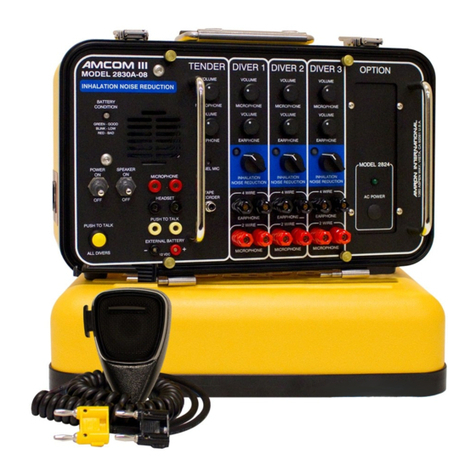
Amron
Amron AMCOM III 2830A Series user manual

Mirion Technologies
Mirion Technologies DMC-2000 manual
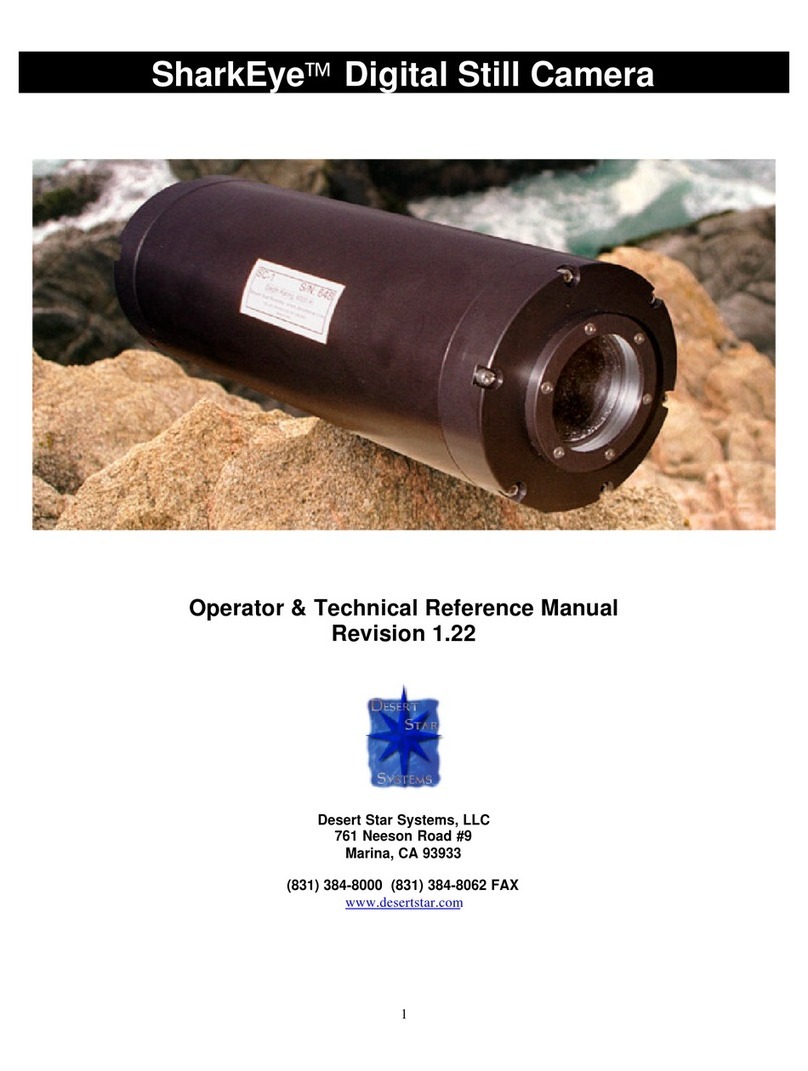
Desert Star
Desert Star SharkEye Operator & technical reference manual

Ocean Reef
Ocean Reef Snorkie-talkie instruction manual


